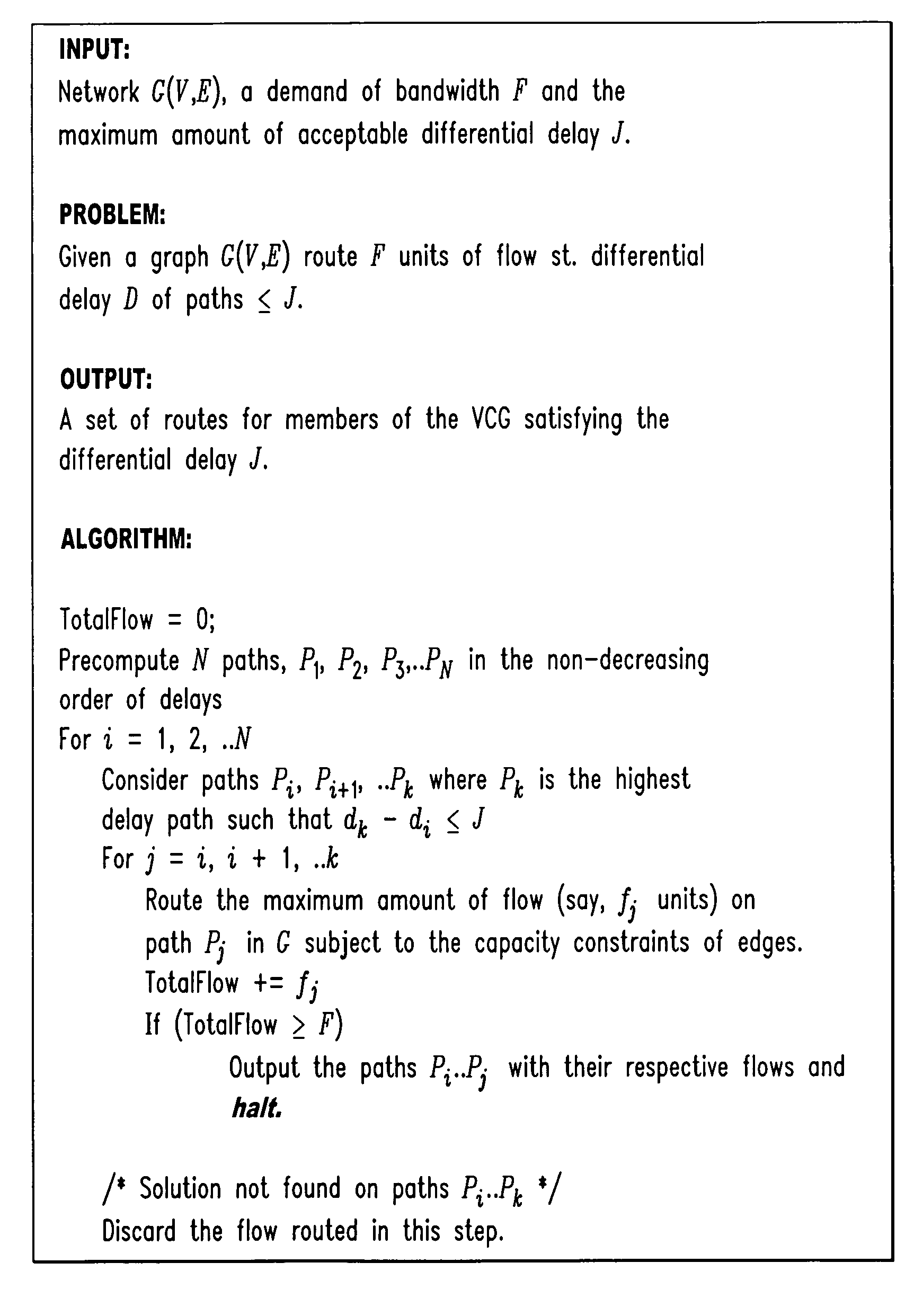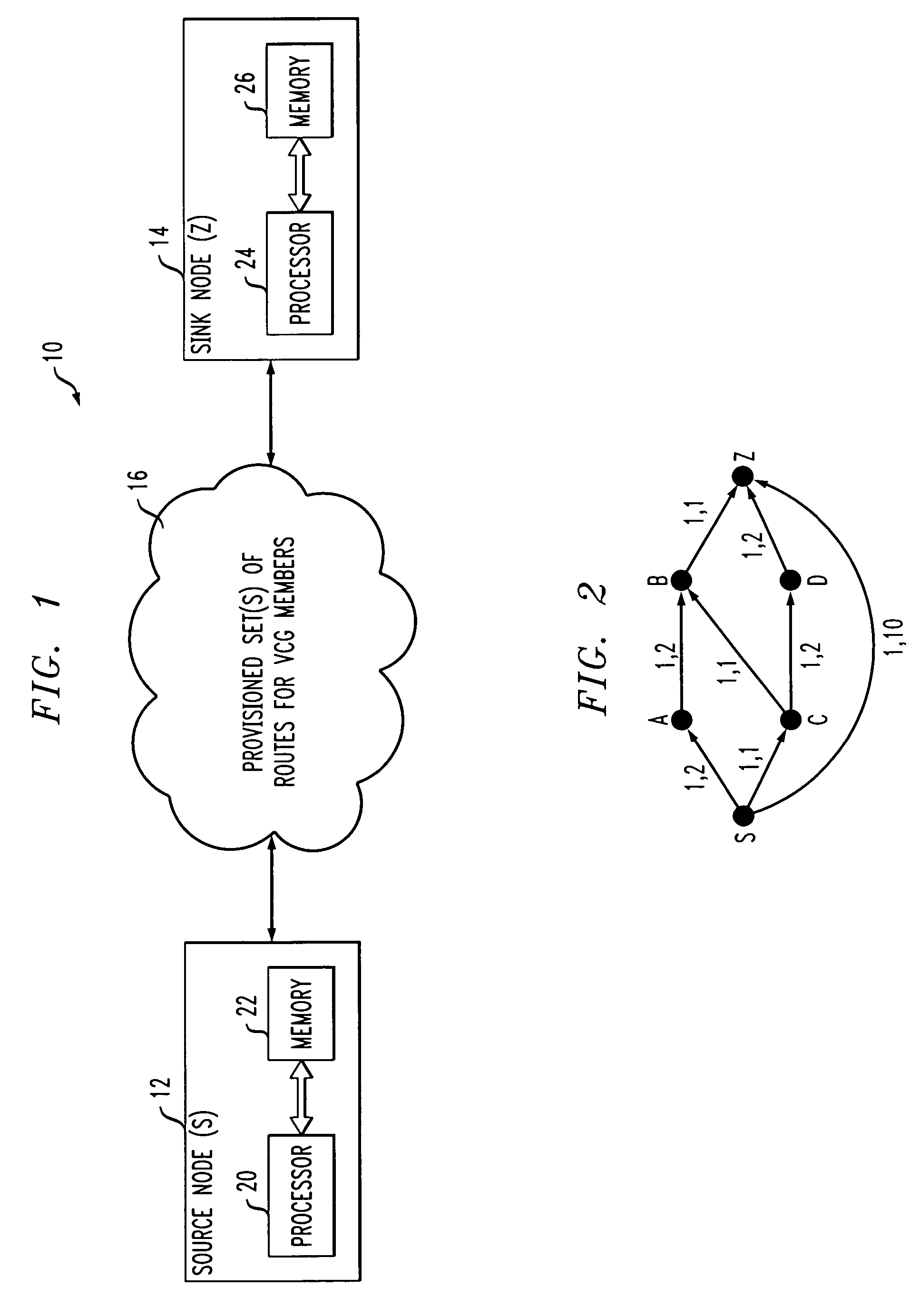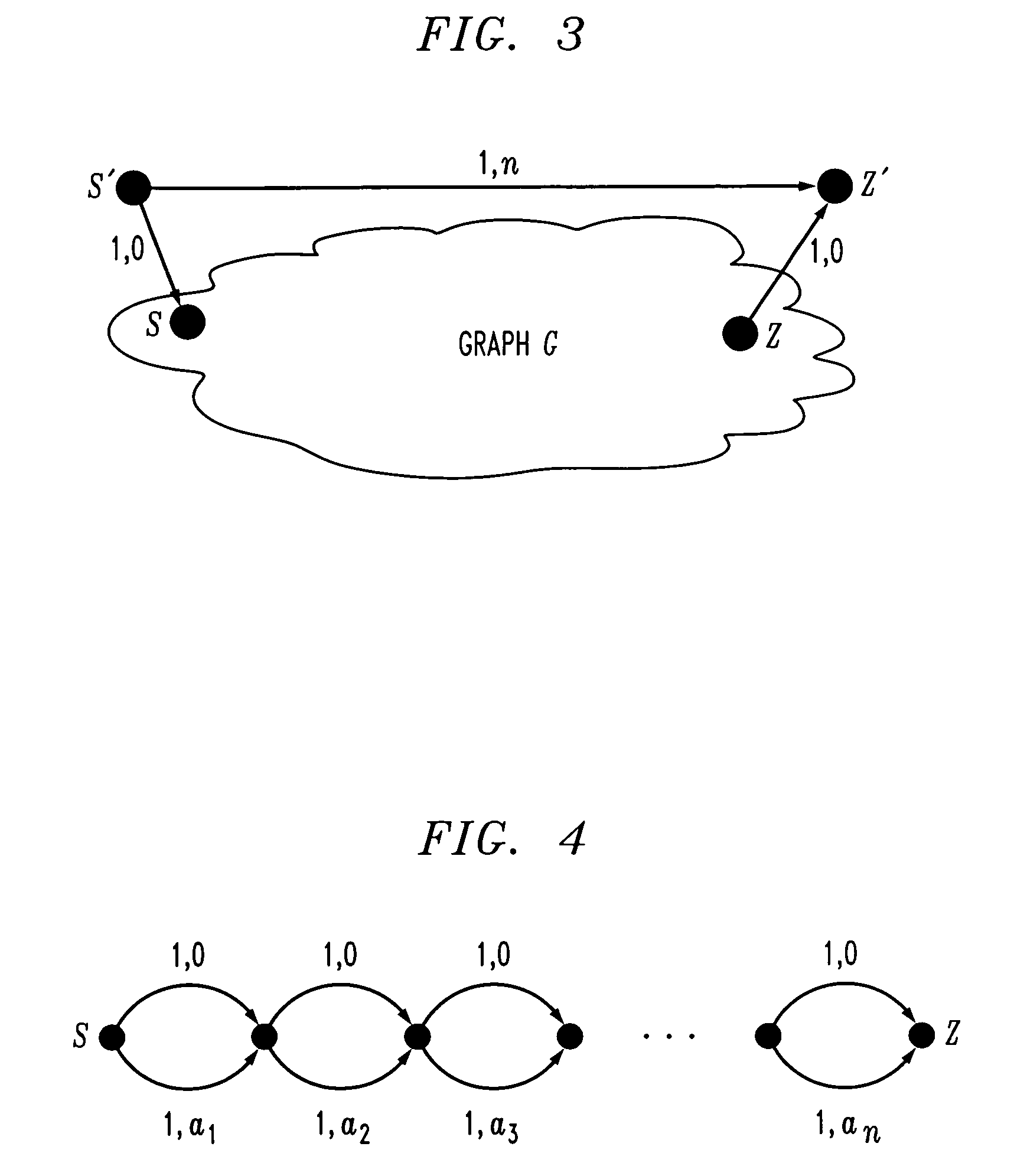Differential delay constrained routing for virtually-concatenated data traffic
a technology of data traffic and concatenation, applied in data switching networks, instruments, frequency-division multiplexes, etc., can solve the problems of underutilization of fixed-bandwidth connections of conventional circuit-switched networks, consuming differential delay buffer space, and unable to achieve bandwidth efficiency
- Summary
- Abstract
- Description
- Claims
- Application Information
AI Technical Summary
Benefits of technology
Problems solved by technology
Method used
Image
Examples
experiment 1
te Analysis
[0078] In this experiment, we investigate the request rejection rates of the three algorithms for the various values of differential delays. Each algorithm is run for the differential delay values of 1, 2, 5 and 10 units. In each run, an ingress-egress pair is randomly chosen and a traffic demand of 10 units is made. The graph in FIG. 7 plots, for different differential delay values, the number of cases where the algorithm could successfully find the solution.
[0079] As expected, ID has the highest success rate because it avoids flow constriction by doing an exhaustive search. Both RD and RDC have similar numbers and are within 90% of ID, a very good success ratio. Between them, RDC is preferable since it delivers lower-cost routes as the next experiment shows.
[0080] As the differential delay bounds become loose, RD and RDC come closer to the performance of ID. This is to be expected as the number of candidate paths meeting delay bounds are more for larger delay values. ...
experiment 2
t Analysis
[0082] In this experiment, we study each algorithm in terms of the cost of the routes it generates. The cost metric we use is the bandwidth-length product, which is the product of the bandwidth and the hop count for each path in the routing solution.
[0083]FIG. 8 shows a histogram of the average cost for the same setup as the last experiment. As expected, ID produces the cheapest paths since the ILP finds the optimal cost solution among the candidate paths. Moreover, as the delay bounds become loose, all the algorithms produce cheaper routes. This is because they have a larger set of paths in the candidate set to process. The benefit of the sorting step based on cost performed by RDC is clearly demonstrated here. It consistently has a close match to ID's cost and provides a significant cost improvement over RD. Given that RDC is within 7% of ID in all the cases, will make it the algorithm of choice in many applications.
experiment 3
mber of Paths
[0084] In this section, we study the effect of the number of precomputed paths (N) on the performance of the algorithms. FIG. 9 plots the routing performance of the three algorithms RD, RDC and ID for various values of N. As is evident from the experiment, each of the three algorithms successfully routes more requests as the number of precomputed paths are increased. An increase of N from 5 to 20 shows significant (≧100%) impact on routing performance. However, the improvement tapers off once N is raised beyond 20 (≈11%-16% when N is raised from 20 to 50).
[0085] This raises a question about an ideal choice for the value of N which would give a satisfactory routing performance without a significant overhead. Note that a large N impacts both the precomputation phase and the run-time phase. For a network topology such as that of FIG. 6, a value of N of about 20 to 25 provides an excellent cost-benefit tradeoff. Of course, other values may be used, and an appropriate value...
PUM
 Login to View More
Login to View More Abstract
Description
Claims
Application Information
 Login to View More
Login to View More - R&D
- Intellectual Property
- Life Sciences
- Materials
- Tech Scout
- Unparalleled Data Quality
- Higher Quality Content
- 60% Fewer Hallucinations
Browse by: Latest US Patents, China's latest patents, Technical Efficacy Thesaurus, Application Domain, Technology Topic, Popular Technical Reports.
© 2025 PatSnap. All rights reserved.Legal|Privacy policy|Modern Slavery Act Transparency Statement|Sitemap|About US| Contact US: help@patsnap.com



